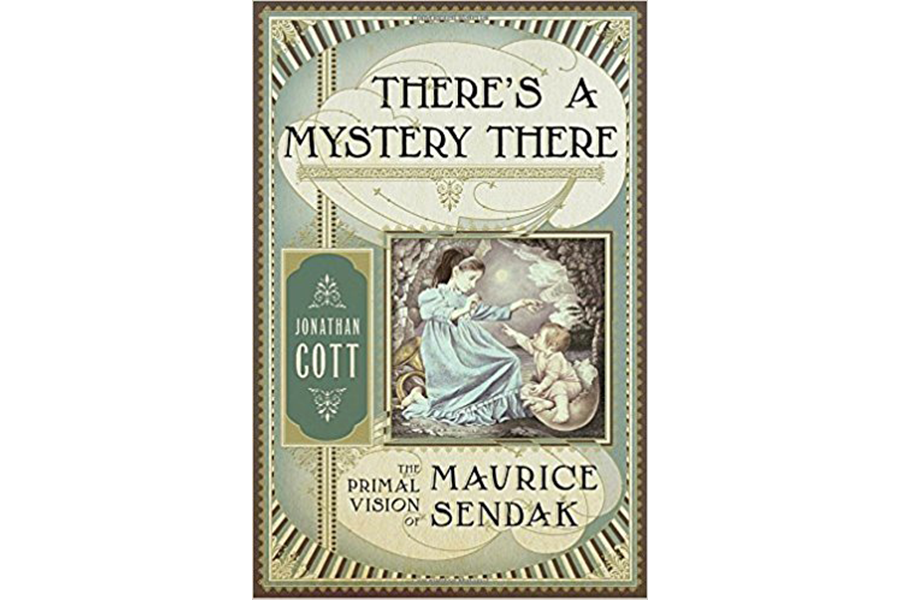'There’s a Mystery There' parses the magic of the work of Maurice Sendak
Loading...
In a legendary 1964 essay, Susan Sontag struck a resounding blow against the overthinking of works of art. “In most modern instances,” she wrote in “Against Interpretation,” “interpretation amounts to the philistine refusal to leave the work of art alone.”
Sontag’s words can be applied everything from ballets to symphonies, but they are especially – if surprisingly – germane to picture books.
After all, what could be more satisfyingly straightforward than Crockett Johnson’s “Harold and the Purple Crayon” or Shel Silverstein’s “The Giving Tree”? Guided largely by illustrations – and written in plain language – such books are exactly what they seem to be.
Of course, that does not stop grown-ups from interpreting – or, to be more precise, over-interpreting – picture books. In 2014, “The Giving Tree” was even the subject of a debate in The New York Times over “whether the book is a tender story of unconditional love, or a disturbing tale of monstrous selfishness.” The third option – that the book merely spun a simple story with lovely, unfussy artwork – was apparently not considered.
Consider the case of Maurice Sendak (1928-2012). The author-illustrator’s sometimes strange, always inspired picture books – including “Where the Wild Things Are” and “In the Night Kitchen” – are the focus of Jonathan Cott’s There’s a Mystery There: The Primal Vision of Maurice Sendak. Although framed as a critical study, Cott makes extensive use of interviews with the Brooklyn native, including those Cott conducted himself.
As Cott tells it, children had little difficulty tuning into Sendak’s wavelength, but adults turned into worrywarts – over-interpreters par excellence – when it came to his fiendish sense of humor and macabre flights of fancy. For example, Cott reports that The Journal of Nursery Education cautioned that young readers should not be left unsupervised with “Where the Wild Things Are”: “We should not like to have it left about where a sensitive child might find it to pore over in the twilight.” And Cott quotes a parent who objected to the very premise of “Outside Over There” (a haunting but obviously fantastical tale of ghoulish creatures who abduct an infant): “Why on earth would you want to plant the idea of fear and worry with your children just before bedtime?”
Of course, children have been known to seek out materials meant to induce “fear and worry,” from EC Comics to the books of Roald Dahl. In Cott’s book, Sendak is quoted as recalling his correspondence with a young fan named Jim, who sent the author a card bearing his own sketch of a Wild Thing beast from the book. “I wrote: ‘Dear Jim, I loved your card,’” Sendak remembered. “Then I got a letter back from his mother, and she said: ‘Jim loved your card so much he ate it.’ That to me was one of the highest compliments I’ve ever received.”
Perhaps Sendak prized such praise because his own childhood remained vivid to him. In an interview with Nat Hentoff, Sendak said, “I don’t believe that, in a way, the kid I was grew up into me. He still exists somewhere, in the most graphic, plastic, physical way. I have a tremendous concern for him and interest in him.” As recounted by Cott, Sendak’s mother, Sadie, comes across as a fearsome figure (“Maurice described his mother as being continually anxious, depressed, and withdrawn, but also gruff, abrupt, and rejecting”), while his father, Philip, fostered in his son a delight in frightful stories (“Maurice was profoundly moved and inspired by the haunting stories that his father would tell his children, improvising, embroidering, and often extending a tale over a period of nights”).
Cott is also persuasive in drawing specific links between Sendak’s life and his work. For example, the blubbery bakers who go to work after sunset in “In the Night Kitchen” have their source in advertisements for Sunshine Bakers, which Sendak encountered as a child. “I remember I used to save the coupons showing the three fat little Sunshine Bakers going off to this magic place, wherever it was, at night to have their fun,” Sendak said to Virginia Haviland, “while I had to go to bed.”
Equally plausible is Sendak’s contention that the plot of “Outside Over There” was prompted by his memory, at three-and-a-half, of the kidnapping of Charles Lindbergh Jr. “How defenseless could babies be even among the rich?” Sendak asked Bill Moyers in an interview.
Unfortunately, Cott falters when he indulges in his own form of over-interpretation. At the outset, Cott announces that he will rely on “four companion guides” – namely, art historian Jane Doonan, analysts Richard M. Gottlieb and Margaret Klenck, and playwright Tony Kushner – to explicate the “depths and mysteries” of “Outside Over There.”
Surely Gottlieb is sincere when he states that Sendak’s “Higglety Pigglety Pop!” – about a wayfaring dog – reminds him of Ingmar Bergman’s “The Magician,” but is such a high-flown comparison really in keeping with the spirit of Sendak? Doonan is on surer ground when breaking down Sendak’s art, but her dry analysis fails to capture the beauty of his style, as in this discussion of pages in “Outside Over There”: “Ida’s positioned on the center of the picture plane on a large scale and in profile, with her arms raised, her fists clenched, and her form creates a powerful rising diagonal.”
This wonderfully illustrated book is to be admired for honoring Sendak’s achievements, but it also inadvertently affirms Sendak’s own view, quoted here, of who best appreciates his work: “Despite the fact that I don’t write with children in mind, I long ago discovered that they make the best audience.”
Freelance writer Peter Tonguette contributes to The Columbus Dispatch, The Wall Street Journal, National Review, and other publications.






